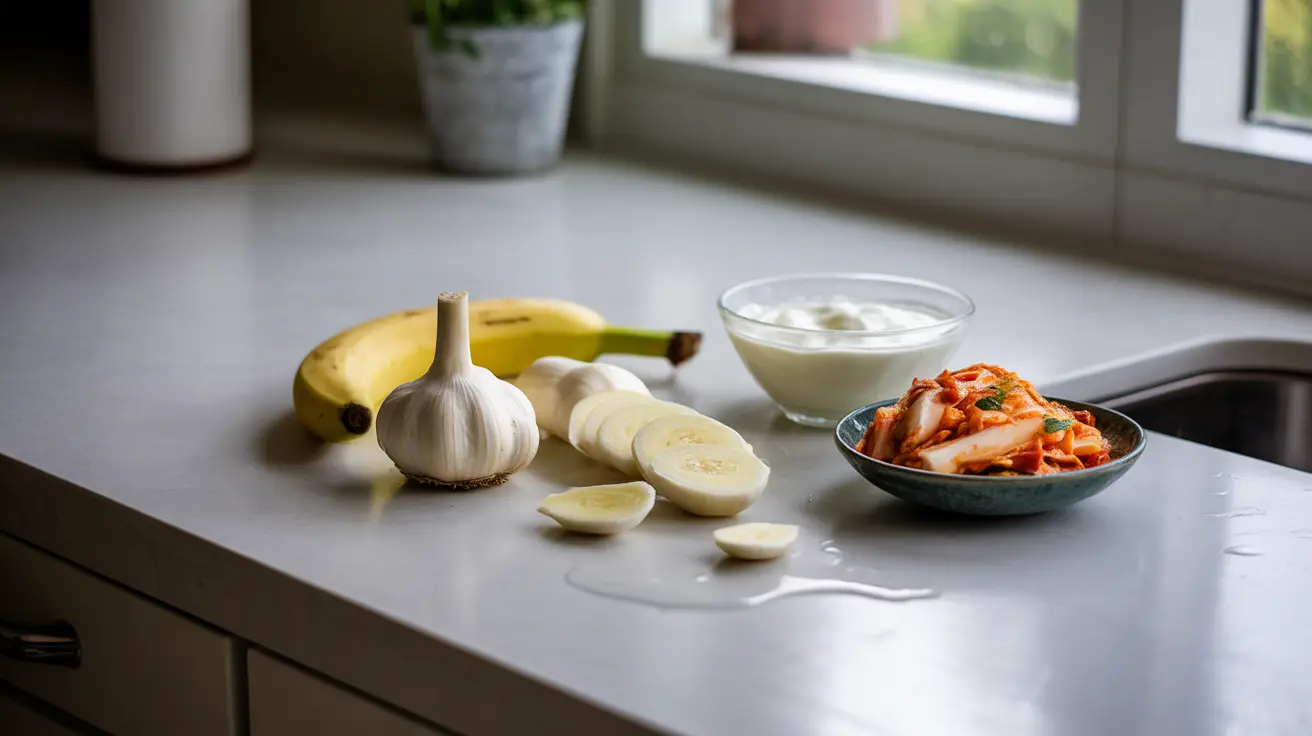Bifidobacteria are essential beneficial bacteria that play a crucial role in maintaining your gut health and overall well-being. These friendly microorganisms help digest food, produce vitamins, and support your immune system. Understanding how to increase bifidobacteria levels naturally can significantly improve your digestive health and overall quality of life.
In this comprehensive guide, we'll explore effective strategies to boost your bifidobacteria levels, from dietary choices to lifestyle modifications, helping you achieve optimal gut health.
Dietary Sources to Boost Bifidobacteria
The foods you eat play a vital role in supporting healthy bifidobacteria populations. Here are key dietary sources that can help increase these beneficial bacteria:
Prebiotic-Rich Foods
Prebiotics serve as food for bifidobacteria, helping them thrive in your gut. Include these prebiotic-rich foods in your diet:
- Bananas (especially slightly underripe)
- Jerusalem artichokes
- Chicory root
- Garlic and onions
- Asparagus
- Oats
- Apples
Fermented Foods
Fermented foods can help create an environment where bifidobacteria flourish:
- Yogurt with live cultures
- Kefir
- Kimchi
- Sauerkraut
- Kombucha
- Miso
The Role of Probiotics and Prebiotics
While prebiotics feed beneficial bacteria, probiotic supplements can directly introduce beneficial bacteria, including bifidobacteria, into your gut. Look for supplements that specifically contain Bifidobacterium strains, and always consult with a healthcare provider before starting any supplementation regimen.
Lifestyle Factors That Support Bifidobacteria Growth
Beyond diet, several lifestyle factors can impact your bifidobacteria levels:
- Regular exercise
- Stress management
- Adequate sleep
- Limiting alcohol consumption
- Avoiding unnecessary antibiotic use
Restoring Bifidobacteria After Antibiotics
Antibiotics can significantly reduce bifidobacteria populations. To restore healthy levels:
- Wait 2-3 hours after taking antibiotics before consuming probiotics
- Continue probiotic supplementation for several weeks after completing antibiotics
- Focus on prebiotic-rich foods
- Consider specific post-antibiotic probiotic formulations
Frequently Asked Questions
What are the best foods to eat to increase bifidobacteria in my gut?
The best foods include fiber-rich prebiotics like bananas, garlic, onions, and Jerusalem artichokes, along with fermented foods such as yogurt, kefir, and kimchi. These foods either feed existing bifidobacteria or introduce new beneficial bacteria into your gut.
How do probiotics and prebiotics help boost bifidobacteria levels?
Prebiotics serve as food for bifidobacteria, helping them multiply and thrive in your gut. Probiotics can directly introduce new bifidobacteria strains into your digestive system, helping to establish and maintain healthy populations.
Can increasing bifidobacteria improve digestion and reduce IBS symptoms?
Yes, higher levels of bifidobacteria have been linked to improved digestion and reduced IBS symptoms. These beneficial bacteria help break down food, reduce inflammation, and maintain healthy gut barrier function, which can alleviate common IBS symptoms like bloating and irregular bowel movements.
What lifestyle habits support healthy bifidobacteria growth besides diet?
Regular exercise, stress management, adequate sleep, and limiting alcohol consumption all support healthy bifidobacteria growth. Maintaining a consistent sleep schedule and managing stress through activities like meditation or yoga can particularly benefit your gut microbiome.
How can I restore bifidobacteria after taking antibiotics?
To restore bifidobacteria after antibiotics, take a high-quality probiotic supplement containing Bifidobacterium strains, eat plenty of prebiotic-rich foods, and consume fermented foods. Start probiotics during antibiotic treatment (taken a few hours apart) and continue for several weeks afterward to help rebuild beneficial bacteria populations.




